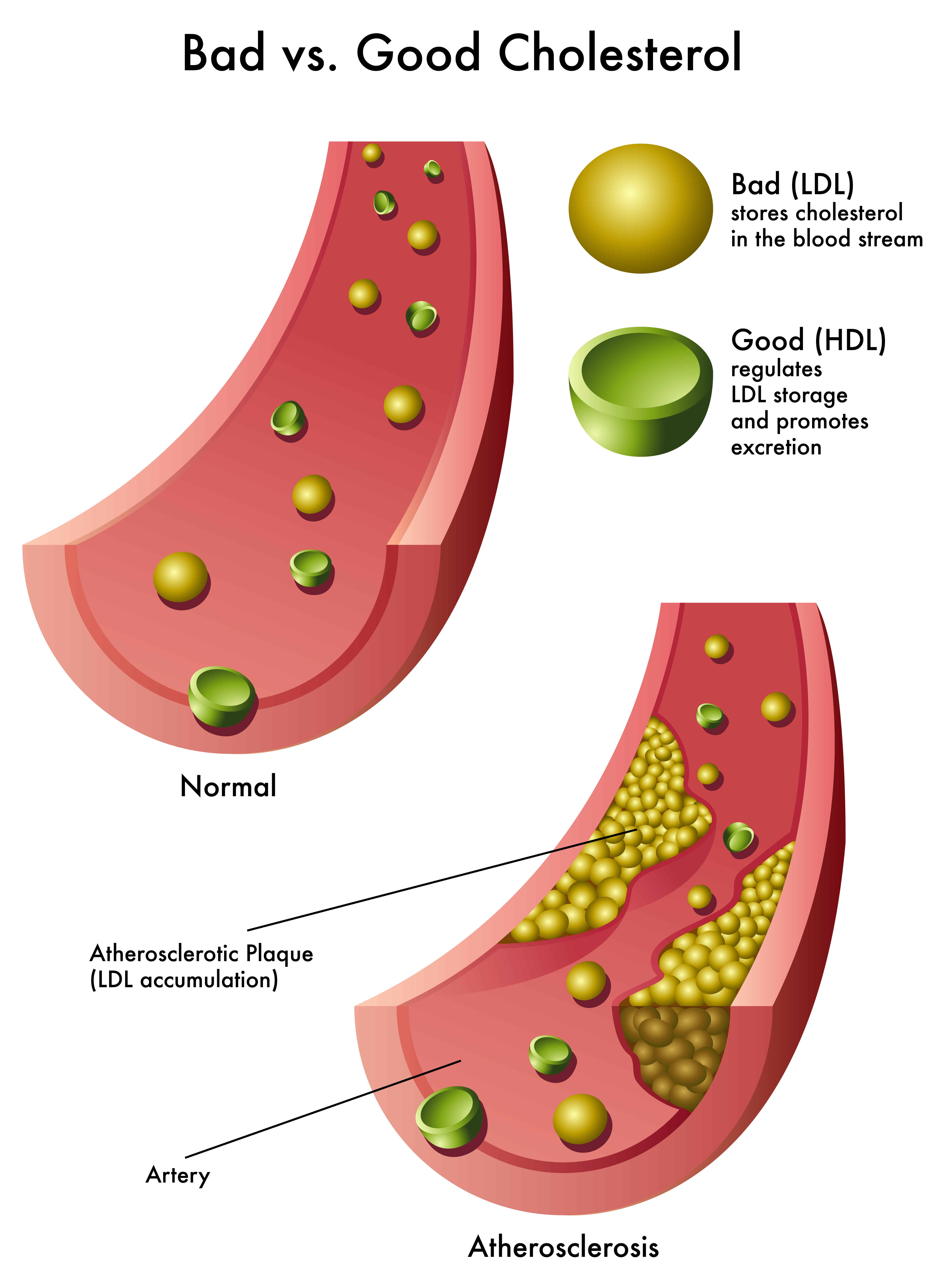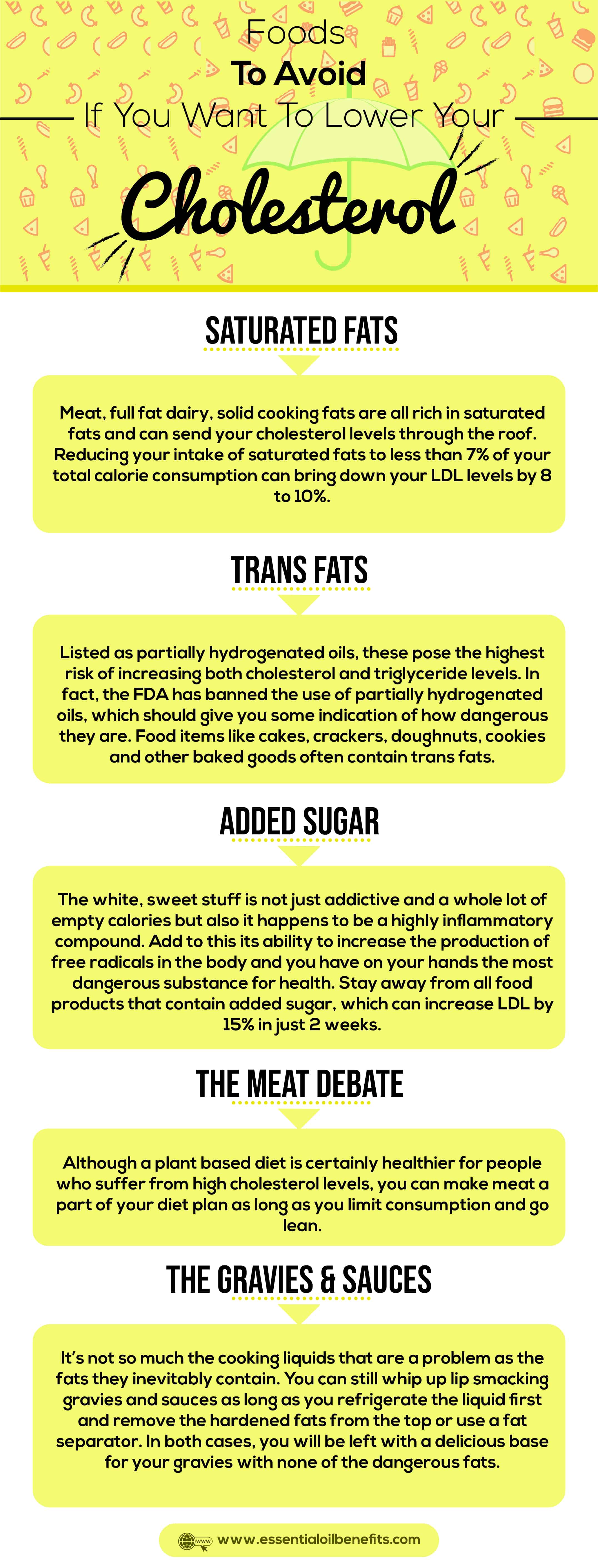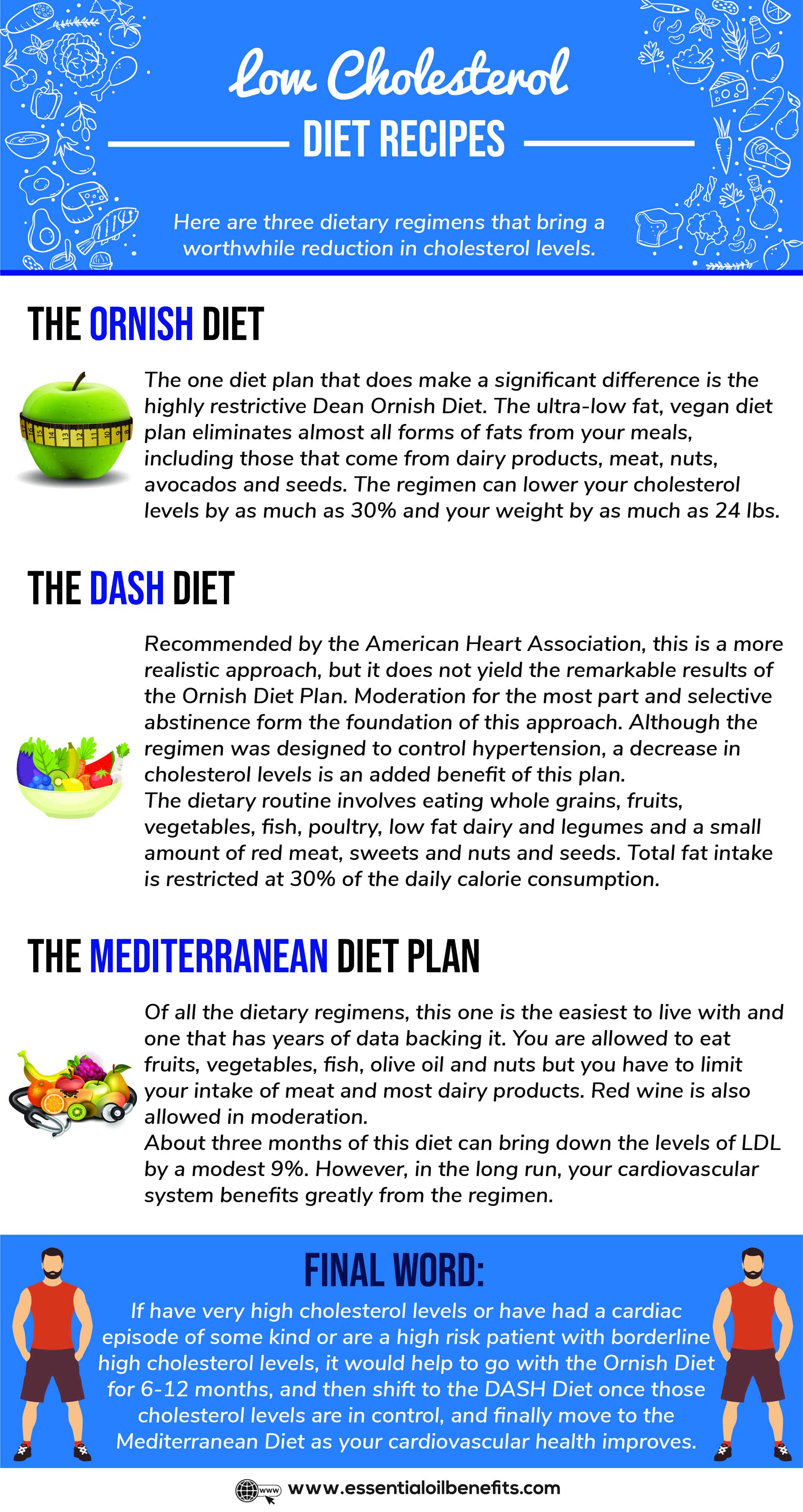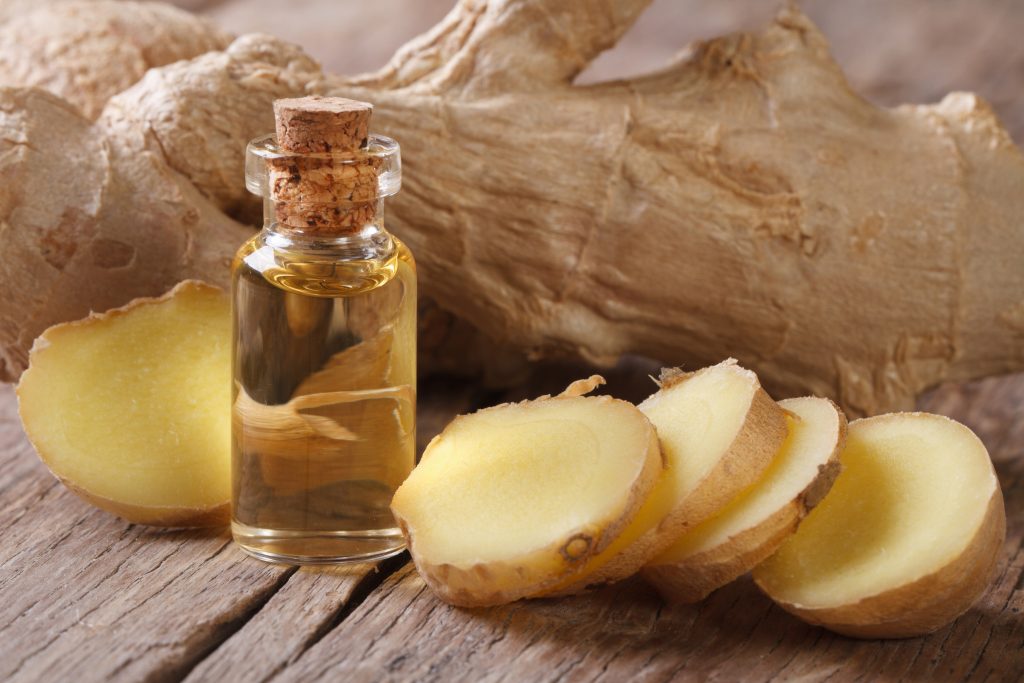 Cholesterol is a natural substance produced by the liver that the body needs for the proper function of hormones, nerves and cells. Cholesterol that circulates as lipids (fats) in the blood, also called plaque, has a tendency to deposit itself on the walls of arteries reducing the blood flow to the vital areas of the body.
Cholesterol is a natural substance produced by the liver that the body needs for the proper function of hormones, nerves and cells. Cholesterol that circulates as lipids (fats) in the blood, also called plaque, has a tendency to deposit itself on the walls of arteries reducing the blood flow to the vital areas of the body.
Cholesterol has earned itself quite the bad rep as the super villain that can kill the ticker. Yes, the waxy substance does play a role in clogged arteries, which can harm both the pump and the pipes in your body along with several other organs.
But, it’s not as much of a bad boy as it’s made out to be! For starters, the natural sterol has several crucial functions in the body. This waxy, oily substance is needed:
- For the formation of cellular membranes.
- For the synthesis of Vitamin D.
- For the secretion of digestive acids in the intestine.
- To make important hormones like estrogen and testosterone.
So, how does this good boy go all mean and ugly?
Too much of even a very good thing can be bad and that’s the case with cholesterol. This fatty substance is sent to different parts of the body through the blood stream. As long as you have just enough cholesterol in the body, things will run along smoothly.
It’s when you have too much of this substance flowing through your blood stream that it starts to stick to the walls of the blood vessels. Over time, the buildup gets oxidized and forms a hard layer that disrupts the flow of blood. This hard layer, also known as plaque, can significantly reduce blood flow to an organ/part of the body.
Plus, there is always the risk of the plaque dislodging and moving through the circulatory system till it comes to a blood vessel that is small enough for it to be blocked completely by the piece of debris. And, that’s a simplified description of how strokes and heart attacks occur.
So, What Exactly Is A High Cholesterol Level?
Cholesterol cannot move across the body on its own, so it’s combined with protein (lipoprotein= lipo (lipids/fats) + protein) to facilitate its movement through blood. The varying ratios of cholesterol to protein create four types of cholesterol:
- HDL (high density lipoproteins): This is the so-called good cholesterol, which has a higher proportion of protein. HDL protects the heart and lowers the risk of cardiovascular and coronary diseases. It makes up 20-30% of the total cholesterol level.
- LDL (low density lipoproteins): This has lower levels of protein as compared to HDL and is the so called “bad cholesterol”. Because LDL contains higher levels of the waxy, sticky cholesterol, it is implicated in the formation of arterial plaque. LDL makes up 70-80% of the total serum cholesterol levels.
- VLDL (very low density lipoproteins): This has the lowest level of protein and the highest level of cholesterol. It forms a mere 10% of the total circulating cholesterol level but is more dangerous than LDL and is a precursor of the latter.
- In addition to the three types of cholesterol, triglycerides (an ester formed by combining glycerol with 3 fatty acids) are also found in the blood. These triglycerides are a precursor of VLDL. High triglyceride and LDL levels can greatly increase the risk of arterial clots.
Cholesterol Recommended Ranges
When you get a lipid profile test done, the total cholesterol score is a sum of the cholesterol and triglyceride levels. Typically, triglycerides form 20% of this number. Here is what the recommended ranges look like:
For HDL:
- Dangerous: Below 40 mg/dl for men and 50 mg/dl for women.
- Borderline dangerous: Above 41 mg/dl but below 59 mg/dl.
- Safe: Above 60 mg/dl.
For LDL:
- Safe for heart disease patients: Below 70 mg/dl.
- Safe for high risk for heart disease patients: From 71 mg/dl to 100 mg/dl.
- Safe for people with no health issues: From 100 mg/dl to 129 mg/dl.
- Borderline dangerous: Above 130 mg/dl but below 159 mg/dl.
- Dangerous: Above 160 mg/dl but below 189 mg/dl.
- Very dangerous: Above 190 mg/dl.
For VLDL:
Your lipid profile will not list the value of VLDL, but it is estimated at 20% of the triglyceride level. However, this correlation does not work if your triglyceride level stands at more than 400 mg/dl. Any value of VLDL above 30 mg/dl would be dangerous.
For Triglycerides:
- Safest: Below 100 mg/dl.
- Safe: Between 101 mg/dl and 150 mg/dl.
- Borderline dangerous: Above 151 mg/dl but below 199 mg/dl.
- Dangerous: Above 200 mg/dl but below 499 mg/dl.
- Very dangerous: Above 500 mg/dl.
For Total Cholesterol:
- Safe: Below 200 mg/dl.
- Borderline dangerous: Above 201 mg/dl but below 239 mg/dl.
- Dangerous: Above 240 mg/dl.
Facts About Cholesterol
The two images below show 13 facts about Cholesterol.
Dangers Of High Cholesterol
Over 15% of Americans suffer from high cholesterol levels. Too much cholesterol can have a detrimental effect on most major organs in the body, but the mechanism of all the problems caused by high cholesterol boils down to its buildup in the blood vessels.
I have already told you how this waxy substance slowly accumulates in the inner walls of the blood vessels, obstructs blood and leads to the hardening of the arteries. Depending on which organs are served by the affected blood vessels, this plaque-buildup can lead to a host of life threatening conditions such as:
1. Atherosclerotic heart diseases
When blood flow to the heart is impacted, the heart muscles don’t get enough oxygen, which can lead to severe chest pain. The condition is known as angina, and it’s life-threatening. In worst cases, the lack of oxygen can cause the heart muscles to be severely impacted and even die, thus leading to a heart attack or even heart failure.
2. A stroke or transient ischemic attack
Even small clots and bits of arterial plaque have the ability to clog the tiny arteries that supply blood to the brain. The lack of oxygen can kill brain cells within a matter of minutes, in a condition that’s commonly known as a stroke. The aftermath of a stroke can be life altering and often includes impaired physical and mental functioning.
3. Renal failure
The effect of plaque buildup in the blood vessels is the most dangerous when the arteries in question are small, like those serving the kidneys and the intestines. A stroke often leads to partial or complete renal failure and creates the need for lifelong dialysis support.
4. Peripheral artery disease
In this condition, the plaque builds up in the arteries that supply blood to the legs. The paucity of oxygen and nutrients caused by the narrowed blood vessels leads to chronic swelling and pain in the legs.
5. High blood pressure
This is both a cause and effect of hardened and narrowed arteries. With not enough room to move, the blood flows through the circulatory system at a higher pressure as the heart has to work extra hard to pump it through the arteries despite the blocks.
Recommended Natural Product To Lower Cholesterol
Want to drop your cholesterol to a healthy level…Discover how cutting one single ingredient lowers your cholesterol number to below 100 and clean out the plaque buildup in your arteries.
Foods To Eat To Lower Cholesterol
Colorful veggies and leafy greens
According to Ayurveda, the astringent nature and bitter taste of leafy greens is just the thing you need to quell the kapha dosha that causes high cholesterol. The take of modern dietary science on this matter is slightly different.
It comes down to the fact that colorful veggies and leafy greens are a rich source of micronutrients, antioxidants and fiber, all of which help to keep cholesterol levels in check and prevent its accumulation in the blood vessels. Not to mention that the high nutritional value comes at a very low calorific cost. So, you get the good stuff without piling on the pounds.
Nuts and seeds
If you want to lower LDL and triglyceride levels, few things can help as much as nuts and seeds. Plus, they pack in a significant nutritional punch. In fact, there are several studies that back the beneficial effects of nuts and seeds on heart health.
The fruits
Another nutrient dense and delicious offering from Mother Nature, many fruits are a rich source of soluble fiber. Cholesterol from the blood is used up to make digestive bile juices. Soluble fiber is very hard to digest, which means it needs more digestive enzymes and hence uses up more cholesterol.
This explains the almost 6% reduction in LDL brought on by the consumption of 4 servings of fruits and vegetables each day. Gorge on blue berries, pears, apples, citrus fruits, strawberries and grapes, which offer soluble fiber and antioxidant benefits.
Omega 3 fatty acids
You can get this anti-inflammatory nutrient from a supplement, flax seeds, walnuts or fatty fish. Regardless of their source, these lipids help to lower the amount of LDL in the blood and stop the inflammatory response that eventually causes atherosclerosis and heart problems.
The healthy fats
Avocados, canola oil, soy oil, sunflower oil and olive oil all provide healthy fats that lower the levels of LDL and triglycerides.
Herbs and spices
Flavor your food with garlic, ginger, rosemary, thyme, oregano, basil, turmeric, cumin, coriander/parsley, fenugreek, cinnamon, mint and cloves to get a potent combination of anti-inflammatory and antioxidant benefits along with a cholesterol lowering effect. Even a single clove of garlic per day and ½ tsp. cinnamon can lower your cholesterol levels by as much as 9% in a few months.
Legumes and beans
These versatile food items are chock full of micronutrients and they keep you feeling full for longer. Plus, they offer boat loads of soluble fiber. So, make it a point to add lentils, peas, garbanzo beans, kidney beans and chickpeas to your meals to lower LDL and raise the levels of HDL.
High fiber foods
Whole grains, barley, oats, chia seeds, brown rice, bran, quinoa, amaranth and wild rice can literally sop up the cholesterol from your arteries. As little as 10 grams per day of these foods can bring down total cholesterol and LDL levels by as much as 10%.
The brew
Green tea, with its very high content of polyphenols, not only neutralizes the free radicals that cause lipid peroxidation but also exerts an anti-inflammatory effect on the body. The bioactive compounds in green tea, not only speed up the removal of cholesterol from the body but also lower the production of LDL in the liver.
Soy
A fantastic source of protein and isoflavones, soy beans and fermented soy food products can reduce LDL by 4 mg/dl even if consumed in modest quantities every day.
The sterols and stanols
Food items fortified with sterols and stanols (derived from plant gum) can bring about a significant reduction of 10% in LDL levels, with just 2 grams of daily consumption. You will find cereals, fruit juices, chocolates and granola bars with sterols and stanols added to them.
Foods To Avoid If You Want To Lower Your Cholesterol
Here are some of the bad foods you should avoid:
Saturated fats
Meat, full fat dairy, solid cooking fats are all rich in saturated fats and can send your cholesterol levels through the roof. Reducing your intake of saturated fats to less than 7% of your total calorie consumption can bring down your LDL levels by 8 to 10%.
Trans fats
Listed as partially hydrogenated oils, these pose the highest risk of increasing both cholesterol and triglyceride levels. In fact, the FDA has banned the use of partially hydrogenated oils, which should give you some indication of how dangerous they are. Food items like cakes, crackers, doughnuts, cookies and other baked goods often contain trans fats.
Added sugar
The white, sweet stuff is not just addictive and a whole lot of empty calories but also it happens to be a highly inflammatory compound. Add to this its ability to increase the production of free radicals in the body and you have on your hands the most dangerous substance for health. Stay away from all food products that contain added sugar, which can increase LDL by 15% in just 2 weeks.
The meat debate
Although a plant based diet is certainly healthier for people who suffer from high cholesterol levels, you can make meat a part of your diet plan as long as you limit consumption and go lean.
The gravies and sauces
It’s not so much the cooking liquids that are a problem as the fats they inevitably contain. You can still whip up lip smacking gravies and sauces as long as you refrigerate the liquid first and remove the hardened fats from the top or use a fat separator. In both cases, you will be left with a delicious base for your gravies with none of the dangerous fats.
Supplements To Lower Cholesterol
Triphala
This is an Ayurvedic formulation that combines three herbs (harda, berada and amlaki). The astringent nature of the preparation helps to regulate fat metabolism and improves digestion. However, triphala is a laxative and must be used with discretion.
Psyllium husk
Full of soluble fibers, psyllium husk improves digestion and puts enough bulk in the tummy to make you feel full and make your time on the porcelain throne easier.
Niacin
One from the family of B-vitamins, special supplements of niacin (1-6 grams) can bring down the levels of LDL by as much as 20% in just one year.
L-carnitine
This supplement is a must for vegetarians and vegans as well as those who are limiting their consumption of meat. A nutrient that you can only get from animal foods, L-carnitine is particularly beneficial for diabetics and can help to notably reduce lipid peroxidation.
Whey protein
All those benefits from dairy products come courtesy of whey protein. The good news is that you can always consume it in supplement form. In fact, supplementing with whey protein can bring about a significant reduction in the levels of LDL and total cholesterol as well as control high blood pressure.
Before you consider using a supplement, talk to your doctor about it. Depending on underlying health issues and your overall fitness not all supplements will work for you and some may even lead to side effects. So, it’s best to seem medical advice on this.
Low Cholesterol Diet Recipes
There are scores of diet plans that are recommended for cholesterol control. While many of them are heart healthy, not all of them manage to bring about a worthwhile reduction in cholesterol levels. Here are three dietary regimens that come highly recommended.
The Ornish Diet
The one diet plan that does make a significant difference is the highly restrictive Dean Ornish Diet. The ultra-low fat, vegan diet plan eliminates almost all forms of fats from your meals, including those that come from dairy products, meat, nuts, avocados and seeds. The regimen can lower your cholesterol levels by as much as 30% and your weight by as much as 24 lbs.
The best part is that this is the only evidence based diet program that can keep the weight off and cholesterol levels in control even over the long term. But, the big problem with this diet is that it’s extremely hard to stick to it, given its restrictive nature. Basically, you will end up eating a lot of fruits, veggies and whole grains and nothing else.
The DASH Diet
Recommended by the American Heart Association, this is a more realistic approach, but it does not yield the remarkable results of the Ornish Diet Plan. Moderation for the most part and selective abstinence form the foundation of this approach. Although the regimen was designed to control hypertension, a decrease in cholesterol levels is an added benefit of this plan.
The dietary routine involves eating whole grains, fruits, vegetables, fish, poultry, low fat dairy and legumes and a small amount of red meat, sweets and nuts and seeds. Total fat intake is restricted at 30% of the daily calorie consumption. Because you do get a few servings of sweets, meat, nuts and seeds every week, it is easier to adhere to this diet plan. Plus, the low sodium content of the allowed food items makes this a heart healthy option.
The Mediterranean Diet Plan
Of all the dietary regimens, the Mediterranean diet is the easiest to live with and one that has years of data backing it. You are allowed to eat fruits, vegetables, fish, olive oil and nuts but you have to limit your intake of meat and most dairy products. Red wine is also allowed in moderation.
In other words, you load up on antioxidant and cholesterol lowering foods, which is the perfect way to lower the levels of serum cholesterol and limit the risk of lipid peroxidation. About three months of this diet can bring down the levels of LDL by a modest 9%. However, in the long run, your cardiovascular system benefits greatly from the regimen.
Of course, there is no reason to go with just one diet plan. For those of you, who are otherwise healthy but do have a few extra pounds or are worried about your cholesterol levels, a shift to the Mediterranean Diet will put your health and body back in the green.
However, if have very high cholesterol levels or have had a cardiac episode of some kind or are a high risk patient with borderline high cholesterol levels, it would help to go with the Ornish Diet for 6 -12 months, and then shift to the DASH Diet once those cholesterol levels are in control, and finally move to the Mediterranean Diet as your cardiovascular health improves.
Exercise Plan To Lower Cholesterol Naturally
You can follow any kind of diet plan that suits your specific health needs, but exercise has to be a part of the lifestyle changes that you make to control your cholesterol levels. Physical activity not only helps to increase the amount of good cholesterol but also changes the quality of the cholesterol particles flowing through the blood.
With exercise, these particles get larger and fluffier, which makes it hard for them to stick to each other and to the walls of the blood vessels. Any kind of physical activity is better than no exercise at all. But, if you are serious about your cholesterol control goals, here is how different types of workouts can help:
- 30 minutes of low to moderate intensity aerobic exercise everyday can lower LDL levels by 5% and triglyceride levels by almost 4%, while increasing HDL levels by 4.6%. You can take your pick from jogging, running, cycling, swimming, brisk walking or dancing.
- Clock 20 miles of jogging or running in a week and you can expect your triglyceride levels to plunge by almost 28 mg/dl and your HDL levels to rise by over 4 mg/dl.
- Resistance training is more beneficial for men than women when it comes to taming cholesterol. Three sessions per week of high intensity resistance training were found to lower total cholesterol levels by over 11 mg/dl.
- The most profound difference in cholesterol levels was caused by a combination of aerobic and resistance training. Three sessions per week of one hour each lowered triglyceride and total cholesterol levels by 46 mg/dl and 19 mg/dl respectively.
The most important thing to understand here is that regardless of its type, duration and intensity, physical activity will always prove to be beneficial. But, it’s imperative to start slow and work your way up to the optimal duration and intensity levels. Here are a few tips to get you started:
- Depending on your fitness level, body weight and health condition, start with 15-20 minutes of exercise each day.
- Build up the time to 30 minutes over the period of 1-2 months. You don’t have to put in 30 minutes at once. The idea is to get 30 minutes of physical activity; it does not matter if you split it up into 3 sessions of 10 minutes each.
- Don’t forget to include 5 minutes each of warm up and cool down, which should not be counted towards your total workout time.
- It’s important to find an activity that you love and if need be, workout with a buddy so that your exercise sessions are more enjoyable and you get the required moral support.
- While 30-40 minutes of exercise per day is enough to make a difference to your cholesterol levels, if you want to shed a few pounds, kick things up a few notches and aim for 60 minutes daily.
- An hour of yoga will do just as much good as 30 minutes of jogging. As your fitness level improves, mix and match different types of exercise routines to challenge yourself and stop your body from hitting a plateau.
Best 10 Essential Oils To Lower Cholesterol
1. Lemongrass
The essential oil of lemongrass has been clinically proven to lower the level of cholesterol in the body. While being one of the best oils you can use to support the immune system, Lemongrass also acts as a potent analgesic and anti-inflammatory.
2. Clove
Clove is known for its antioxidant, analgesic and anti-inflammatory effects. Eugenol, which is an active ingredient in clove is an effective platelet inhibitor known to prevent the formation of blood clots. Furthermore, the bioactive compound beta caryophyllene in the oil acts similarly to regulate cholesterol levels in the body.
3. Lavender
Lavender is one of the few essential oils that can have a bearing on cholesterol levels when administered through inhalation. Furthermore, the anti-inflammatory and antioxidant effects of the extract help to lower the risk of LDL oxidation and the inflammatory response which eventually causes the arteries to harden.
If that’s not enough, the fresh, green aroma of lavender is a potent stress and anxiety buster that helps to improve cardiovascular health by lowering cortisol levels in the body.
4. Cinnamon
The major components of the essential oil of cinnamon include coumarins, mannitol, tannin, gum and cinnamaldehyde and the essential oils such as pinene, eugenol and aldehydes. A 2017 study has shown that eating half-teaspoon cinnamon per day can lower sugar levels in the blood, and reduce cholesterol and triglycerides by up to 20%.
As my personal recommendation, consider adding 1 drop of cinnamon oil to oatmeal to better its flavor or just add a drop of this oil to 8 oz. of hot water and 1 tablespoon of honey for an excellent spice tea.
5. Rosemary and Ginger
British doctors often recommend the essential oil of Rosemary to patients with high cholesterol levels. This extract combined with ginger oil not only helps to keep the arteries free of cholesterol buildup but also removes cardiovascular weakness. Take 1 drop of rosemary and ginger oil in a capsule full of olive oil once every second day for a period of 3 weeks.
6. Onion and Garlic
The essential oils of Onion and Garlic helps to reduce cholesterol and blood pressure levels in the body. They are also natural anti-inflammatory agents. Take 1 drop of garlic oil in a capsule filled with flaxseed oil, once every alternate day.
7. Holy Basil
Holy Basil oil is a very effective extract when it comes to reducing the cholesterol levels in the body. Derived from the plant ocimum basilicum, holy basil has antioxidant, anti-inflammatory, antibacterial and cholesterol-lowering properties.
A study published in the journal of phytotherapy research, showed that the extract of basil helps reduce the cholesterol levels in rats that had artificially induced high levels of cholesterol. In addition, the LDL reduction was accompanied by an increase in HDL cholesterol.
8. Bergamot
Bergamot is a potent antidepressant that helps to control bad cholesterol and binge eating. This oil is perfect for those who tend to eat more when under stress. The sedative properties of this extract make it the perfect choice to fight weight gain associated with stress and stress eating.
9. Oregano
The essential oil of Oregano is a natural cholesterol reducing agent that also helps to regulate blood pressure levels. Due to its antibacterial properties, oregano oil can also help prevent heart disease associated with infection. Take one drop of oregano oil in a capsule filled with flaxseed/canola oil, three times a week.
10. Ginger
The essential oil of ginger is known to promote feeling of fullness after meals. It works by increasing the effect of all other essential oils meant for weight loss and cholesterol reduction. Moreover, this oil in combination with clove oil facilitate the breakdown of sugar and its absorption in the body in the form of energy.
7 Essential Oil Recipes To Help You Reduce Cholesterol Levels
Please consult your medical practitioner before ingesting any essential oils. Essential oils should not be ingested by women who are pregnant and/or breast feeding and should also not be administered orally to children. You can click here to read more about my post on food grade essential oils.
Recipe 1 – Capsule for cholesterol control
Mix lemon, cumin and garlic essential oils in 1:1:1 proportion, and add a drop of this blend to a capsule shell filled with peach kernel oil (carrier).
Take one capsule every alternate day for a period of three weeks and then take a break for 2 weeks before resuming round two. This recipe works exceptionally well for cholesterol control.
Recipe 2 – Cholesterol balancing blend
Ingredients:
- Rosemary – 3 parts (contains camphene which can balance cholesterol)
- Cinnamon – 2 parts (reduce sugar levels, blood and liver cleansing)
- Ginger – 1 part (contains curcumene that can help balance triglycerides)
Directions:
Put one drop of the above blend in a capsule shell and top it up with flaxseed oil. Cover with the empty half of the capsule shell and take right before or after your meals, once every second day. Use for three weeks and then take a break of 2 weeks. Repeat as necessary.
Recipe 3 – Anti-cholesterol blend
Use one capsule every alternate day made by combining 1 drop of lemongrass and 1 drop of clove essential oil with enough carrier oil to fill the capsule shell. Angelica sinensis and extra virgin olive oil are fantastic choices for a carrier.
Recipe 4 – Bergamot, Lemon and Basil Essential Oil Combo
- Bergamot – 1 part
- Lemon – 2 parts
- Holy Basil – 1 part
- Required quantity of carrier oil
Add in the essential oils as nominated. Lemon oil is not only an antioxidant, but has cholesterol lowering abilities. Take 1 drop and top up with your preferred carrier oil in a capsule. Use one every second day for two weeks and then take a break for two weeks. Repeat as necessary.
Recipe 5 – Morning cholesterol capsule
- 3 drops each of essential oils of oregano, rosemary and garlic
- Carrier oil (enough to fill a capsule shell)
Blend all the essential oils and add one drop of it to a capsule shell along with enough carrier oil to fill the shell. Use one capsule on alternate days and take it immediately after your breakfast.
Recipe 6 – Using the essential oil of Grapefruit
This is how I use grapefruit essential oil in order to make the most of it:
- Add 1 drop to a glass of drinking water and consume every day before breakfast to flush toxins and boost the metabolism.
- Massage the skin for at least 30 minutes in areas where fat accumulates by using 15 drops of grapefruit essential oil to 1 ounce of carrier oil such as sweet almond or coconut oil.
- Bathing: Add 6-8 drops to your bath water. Relax in this water for at least 20 minutes.
Recipe 7 – Using the essential oil of Bergamot
- Combine with lavender essential oil and diffuse. Inhale the vapors to soothe and relax when you are stressed and hungry.
- Put a drop of essential oil of bergamot into a teaspoon of honey or add it to 4 oz. of coconut milk and consume.
- Use this oil for topical application or foot and neck massage along with appropriate carrier oil such as grapeseed or rosehip oil.
- Bath: Add a few drops of this oil to hot bath water to feel fresh and energetic.
Precautions / Recommendations For Using Essential Oils To Reduce Cholesterol Levels
- Do not ingest essential oils in undiluted form.
- Do not use neat / undiluted essential oils because they are highly concentrated. Neat or undiluted essential oil may cause chemical burns to the organs.
- For a cholesterol-lowering effect, buy only oils that are available in capsules and labeled “standardized extracts.” Standardized extracts are diluted and safer for consumption. Follow the dosage instructions on the manufacturer’s label. After two or three months, get your cholesterol level checked and continually monitor your progress.
- Rotation of essential oils is more effective, i.e. swap essential oil after every two to three weeks of use.
- If you are on prescription drugs for issues related to heart disease or high blood pressure, do not use essential oils before consulting your physician or holistic doctor.
The Final Word
Cholesterol deposits continue to build up in the long term, that heightens the risk of a heart attack or stroke. Generally, our body tends to keep the cholesterol levels balanced but due to the presence of large amount of hydrogenated fats and refined carbohydrates in our diet, the balance of high (raised) LDL (bad) cholesterol and low (reduced) HDL (good) cholesterol gets disturbed. This imbalance is one of the major causes of a heart attack or stroke.
Evidence has shown that essential oils can effectively deal with a variety of these symptoms, but they should always be used with caution. If you are epileptic, pregnant, are breast-feeding, have skin cancer, have kidney/liver damage, diabetes, etc. consult a trained aromatherapist before using essential oils.


























